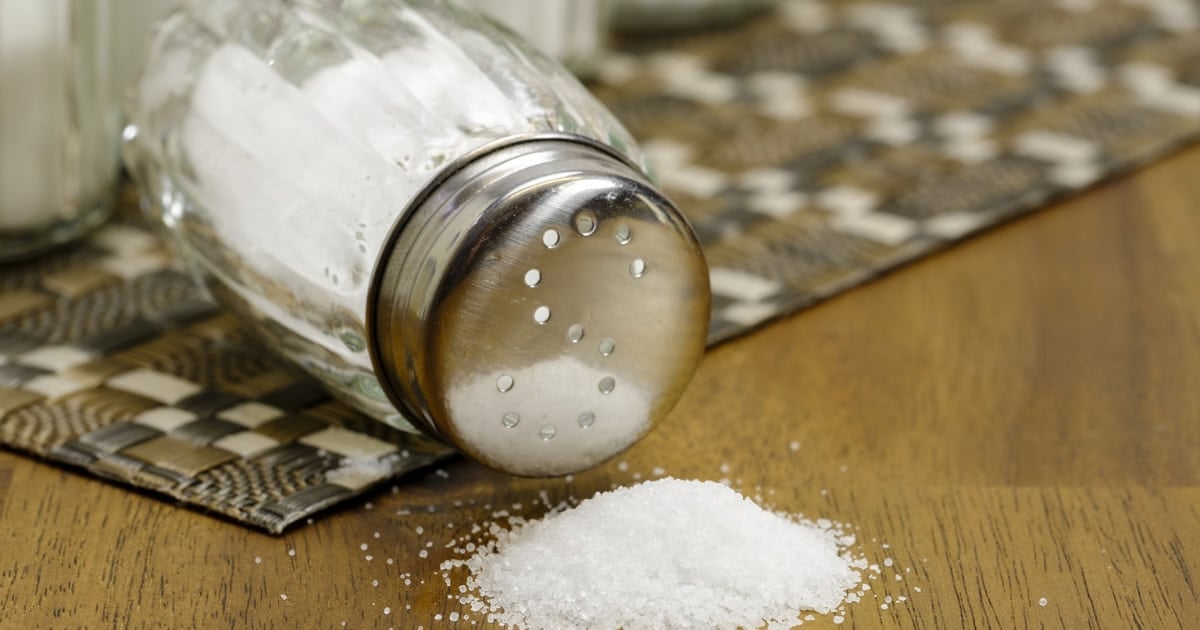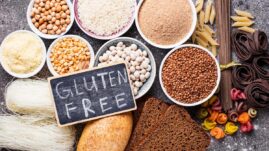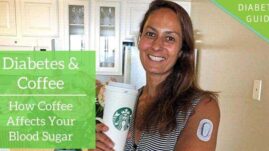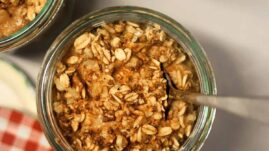Most everyone knows that people with diabetes need to be aware of the number of carbohydrates they eat in a day, but not everyone knows that people with diabetes need to also watch their salt intake.
So, how much salt should you be eating? This article will outline how much people with diabetes need to have in their diets, the risks of eating too much, and how to help lower your daily salt intake to improve your health.

What’s so bad about salt?
Sodium is one of the elements found in salt, making up about 40 percent of salt’s volume by weight.
According to the U.S. Food & Drug Administration (FDA), the average American eats far more than the recommended amount of sodium — upwards of 3,400 mg of sodium per day.
A modest amount of salt (and the accompanying iodine that is added to most table salt in the United States) is crucial for the body to function properly.
While the exact minimum level of sodium necessary for optimal body function has not been precisely established, it is estimated that as little as 200 mg to 500 mg of sodium daily is essential for important processes such as electrolyte balance, maintaining adequate blood pressure, and supporting normal nerve and muscle function.
However, excess salt intake can be dangerous for health. Eating too much salt not only increases blood pressure, but diets higher in sodium content can put you at higher risk for heart disease and stroke — two conditions that people with diabetes are already at increased risk of developing.
Sodium naturally absorbs water. When ingested through a high-sodium diet, it draws water into the bloodstream, pumping up blood volume and thus increasing blood pressure.
Chronic high blood pressure is known as hypertension. When someone lives with hypertension, their heart has to work harder to pump blood around their body, which can cause damage to vital organs including the brain, eyes, kidneys, and, of course, the heart.
Over time, people with hypertension are at increased risk for conditions such as heart attack, stroke, heart failure, kidney disease and failure, and vision loss. When combined with a diabetes diagnosis, the health consequences are even greater.
Is sea salt better than table salt?
By weight, sea salt and table salt have comparable amounts of sodium, so from a health perspective, one isn’t better than the other.
The main differences between these types of salt lie in their taste, texture, and how they are processed. Sea salt is minimally processed and comes from evaporated seawater and may contain trace minerals from the body of water that it is sourced from, which can affect the appearance or taste of the salt.
Table salt comes from salt mines and is processed to remove minerals. It is also often iodized, meaning that it is fortified with the mineral iodine.
How does sodium affect diabetes?
Research indicates that high sodium intake is linked to an increased risk of type 2 diabetes. This connection could be partly due to salt’s potential role in contributing to inflammation and insulin resistance, a precursor to type 2.
Studies, including one from Tulane University with data from the UK Biobank and one focusing on the National Health and Nutrition Examination Survey (NHANES), show that people who frequently add salt to their foods are more likely to develop diabetes.
The findings suggest that reducing salt consumption, even in people without hypertension, could be a valuable strategy in diabetes prevention. This highlights the importance of considering not just carbohydrates but also salt in dietary guidelines for people at risk of diabetes.
Even if you do not develop hypertension, excess salt in the diet can lead to dehydration.
Although sodium itself may not directly impact blood sugar, dehydration can contribute to difficulty managing blood sugar levels, insulin resistance, and the increased potential for diabetic ketoacidosis (DKA) over time.
What are the main sources of excess sodium?
Contrary to popular belief, excess sodium in most people’s diets isn’t due to the salt shaker at the center of their dinner table.
Rather, more than 70 percent of dietary sodium comes from fast-food restaurants and processed foods consumed outside of the home, according to research from 2017 in the journal Circulation. This can vary widely between types of packaged foods, serving sizes, and so forth, but it is something to be aware of when not cooking at home. Common sources of excess sodium include:
- Pizza
- Pasta dishes
- Bread
- Potato chips
- Tortilla chips
- Sandwiches
- Deli meats
- Pretzels
- Pork rinds
- Tacos
- Burritos
- Fried chicken
- Soups
- Burgers
- French fries
- Omelets
- Anything with savory sauces added
How much salt should you eat in a day?
The Dietary Guidelines for Americans, 2020-2025 recommend that most Americans consume no more than 2,300 mg of sodium per day (that’s about 1 teaspoon).
The American Heart Association (AHA) suggests that, ideally, most adults should eat no more than 1,500 mg of sodium per day.
People with diabetes need to pay extra close attention to make sure they’re not eating an excess of salt, whether or not they have existing heart disease or hypertension, since they are already at an increased risk of those complications by having diabetes.
However, individual goals may vary, and some people may need to consume more sodium on occasion.
For instance, athletes and people who are consuming large amounts of water may require extra sodium (especially during physical activity on very hot days), and people who have excessive sweating may need extra sodium to keep their electrolytes in balance.
People who eat only unprocessed, whole foods (where salt is not an added ingredient) may require some added sodium to their diet.
Those who are taking diuretics (“water pills”) should discuss their target sodium intake with their doctor.
Always work with your doctor with an eye toward your lifestyle and health goals to determine the appropriate amount of daily sodium that you require.
Easy ways to reduce sodium consumption
If you’re consuming more sodium than recommended by your health team, there are some easy ways to reduce your daily consumption.
Prepare your own meals and snacks at home
Batch cooking and packing your own breakfasts, lunches, dinners, and snacks will greatly reduce the number of meals you eat out at restaurants and fast-food establishments. This will likely significantly reduce your sodium intake, since you have total control over the amount of added sodium you put in home-cooked food.
Focus on whole, unprocessed foods including plenty of fruits, vegetables, and lean proteins, and watch your sodium intake plummet.
Add herbs and spices in lieu of salt
Simply adding salt and pepper to your cooking is out. Leaning on flavorful herbs and spices, such as garlic, onion, cumin, turmeric, curry, cilantro, parsley, and paprika, is in.
Add a burst of brightness to your meals without adding sodium, and you won’t even miss it.
Read nutrition labels
Spend more time studying nutrition labels on any packaged foods you eat, and try to consume less than the 2,300 mg limit for a day (or initially, just notice how much above or below that number you land).
Just being aware of your sodium intake throughout the day can help you limit or eliminate foods that simply have too much.
Opt for salt-free or reduced-sodium foods
Choosing salt-free or reduced-sodium versions of your favorite foods like nuts, chips, canned beans, canned vegetables, breads, tomato sauces, and soups can help you greatly reduce the amount of sodium in your diet without completely saying goodbye to the types of foods you love.
More and more grocery stores are carrying these options for consumers, so keep an eye out for sodium-free or low-sodium versions of your favorite items.
When dining out, you can request dishes prepared without added salt. Not only is this healthier, but it allows the chef to showcase their expertise in using herbs and spices, rather than sodium, to enhance flavors.
Limit your portion sizes
Less food equals less sodium — sometimes it’s as simple as that. If you’re going out to lunch, cut your sandwich in half, and by definition, you’ve halved your sodium intake for that meal.
You’ve also created an opportunity to add more nutritious options. Halving a sandwich and adding a side salad full of leafy greens and colorful vegetables, for example, is a balanced approach to lowering your sodium intake.
Choose smaller portions of things like pizza and pasta (or opt for an appetizer as your entrée when out to dinner at a restaurant), and you’ll likely decrease the amount of sodium you’re eating by hundreds of milligrams per day.
Reconsider condiments
Popular condiments like soy sauce, fish and prawn sauce, salsa, hot sauce, and prepackaged salad dressings generally have loads of unnecessary sodium.
Make your own salad dressing at home with lemon or lime juice, black pepper, and olive oil for a sodium-free topping. You can also ask for simple olive oil and balsamic vinaigrette for your salads at restaurants.
Add fresh herbs and spices to your dishes with a hint of extra-virgin olive oil for a flavorful zing without the salt.
Get the support you need
Getting support from family and friends can help you immensely when trying to reduce your sodium intake.
Work together to come up with fun, low-sodium recipes, or have a potluck dinner where everyone brings a new, low-sodium dish to share.
Opt out of daily trips to grab fast food and weekly dinner dates at restaurants and instead enjoy more meals with your loved ones at home, where you can work on meeting your health goals together. Added salt is not required!
Final thoughts
Managing sodium intake is a vital part of diabetes care that often goes overlooked. While the focus tends to be on carbohydrates and blood sugar control, the impact of sodium on overall health, especially for people at increased risk of cardiovascular complications, cannot be underestimated.
By making informed choices about the foods you eat, being mindful of hidden sodium in processed and fast-food options, and adopting healthier cooking and eating habits, you can significantly reduce your risk of hypertension and related health issues.
Along with making these dietary changes, regularly consulting with your healthcare team is important for tailoring your sodium intake to your unique health situation.





Colin
I find when I shop for sodium free, or reduced sodium versions they tend to have more sugars, or sweetener added to compensate for the flavour, am I reading, and understanding the labels wrong?
Rashmi Singh
Its an informative article, Thank you for sharing it.